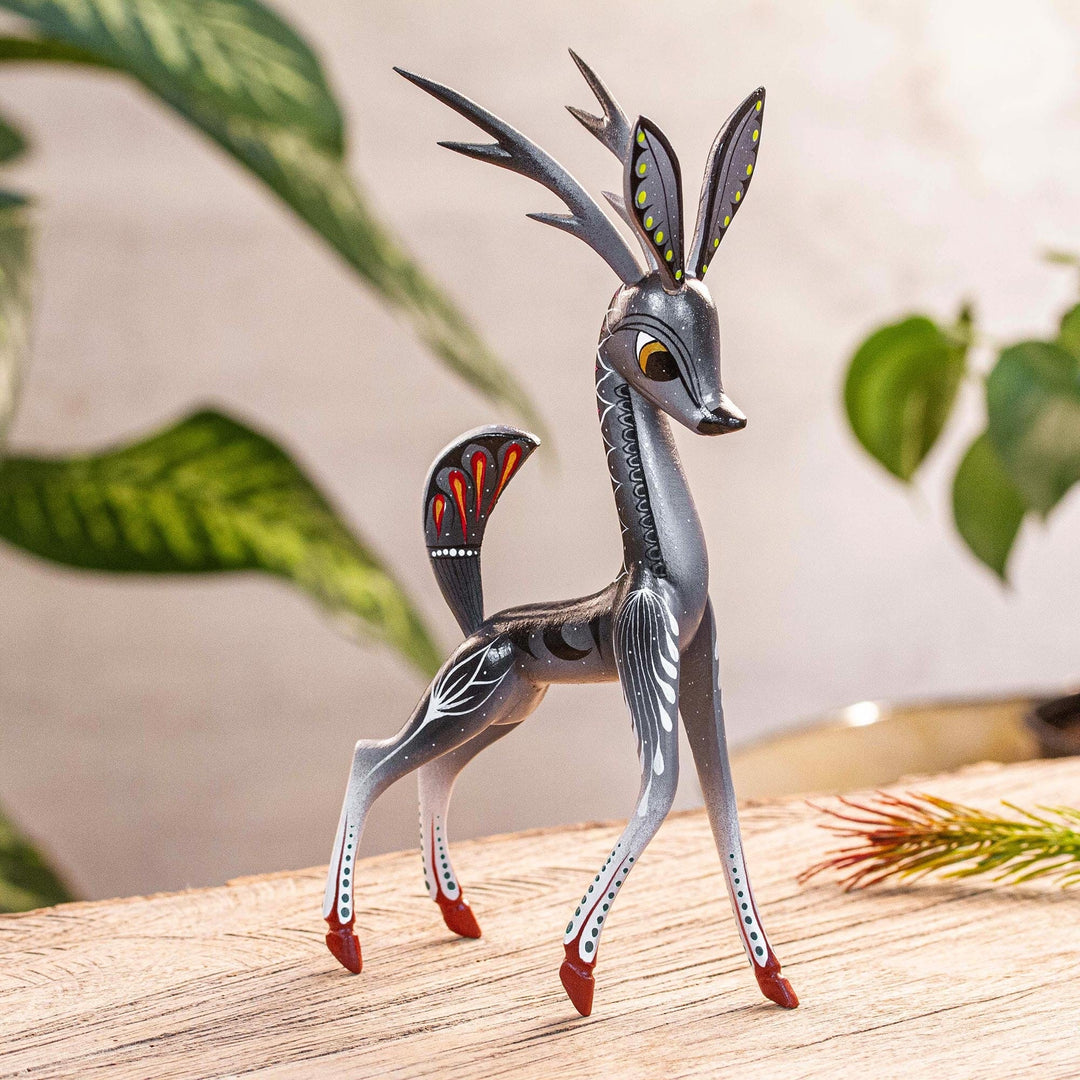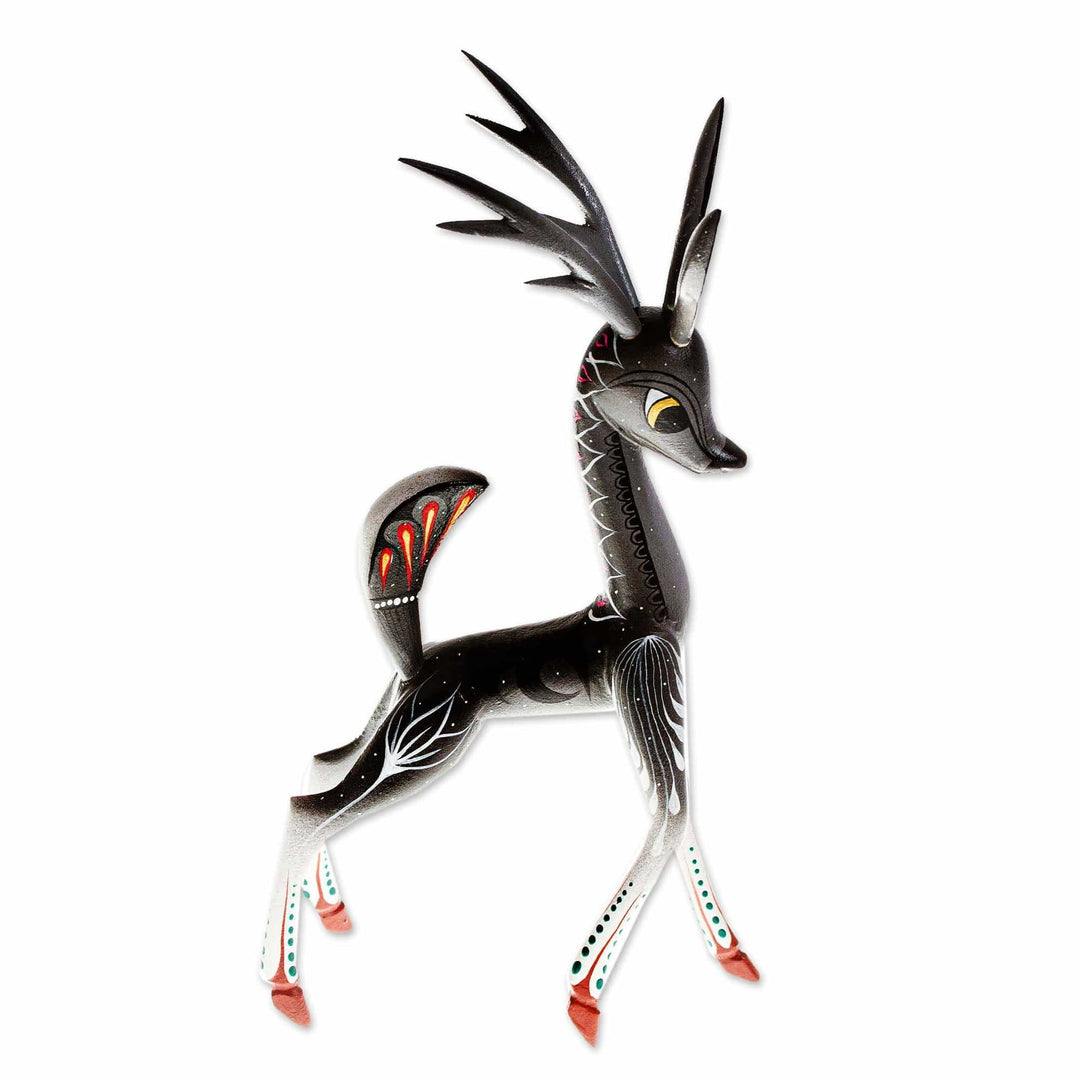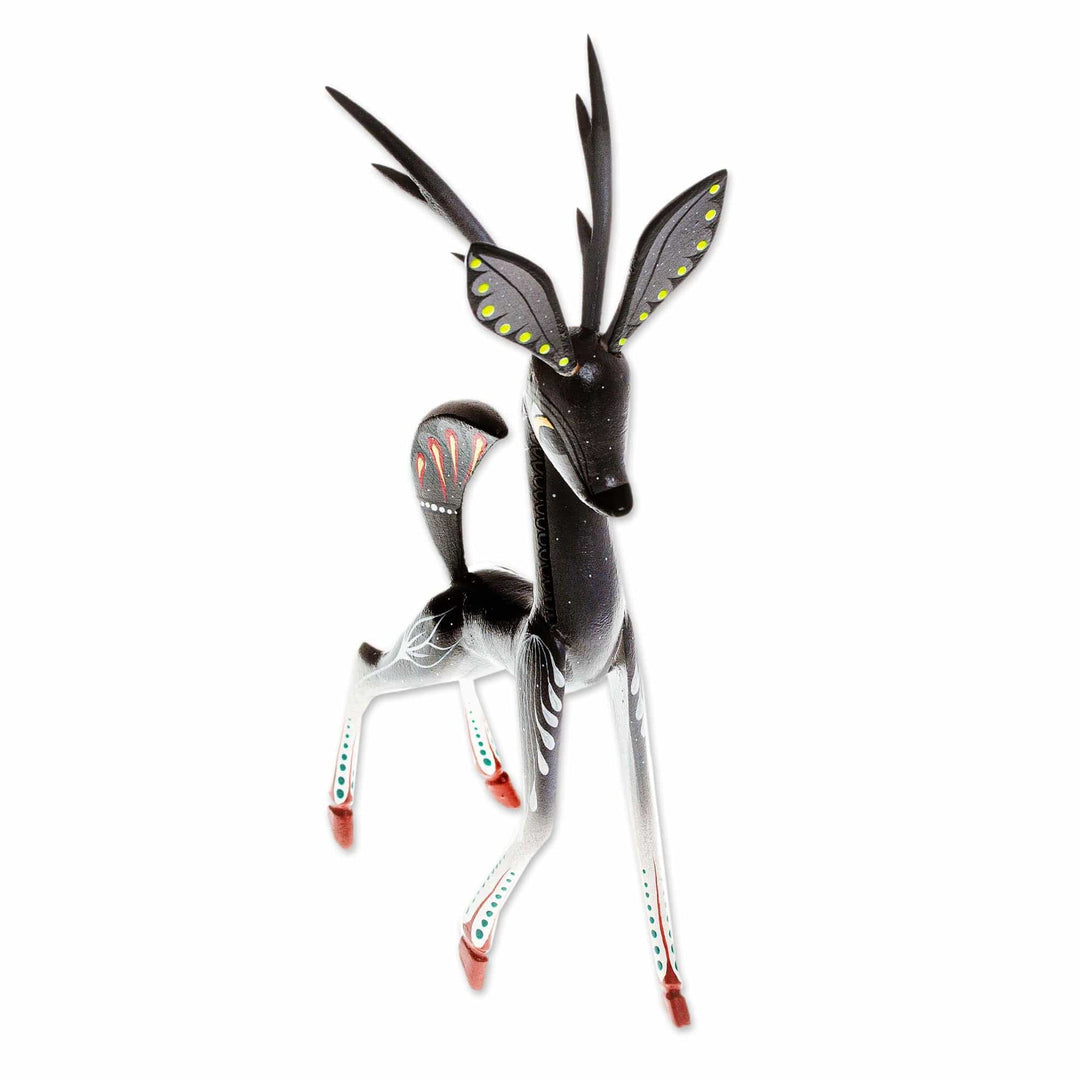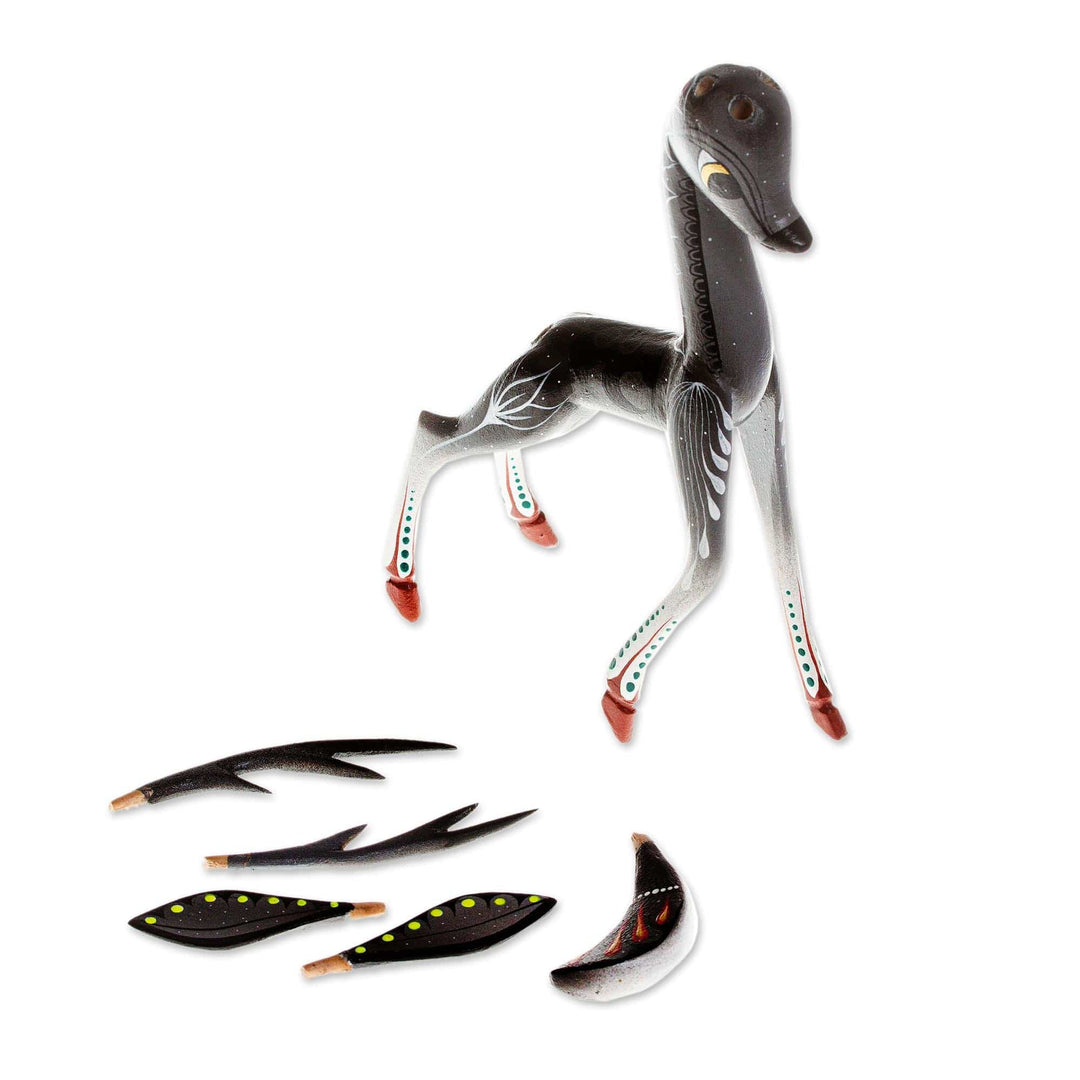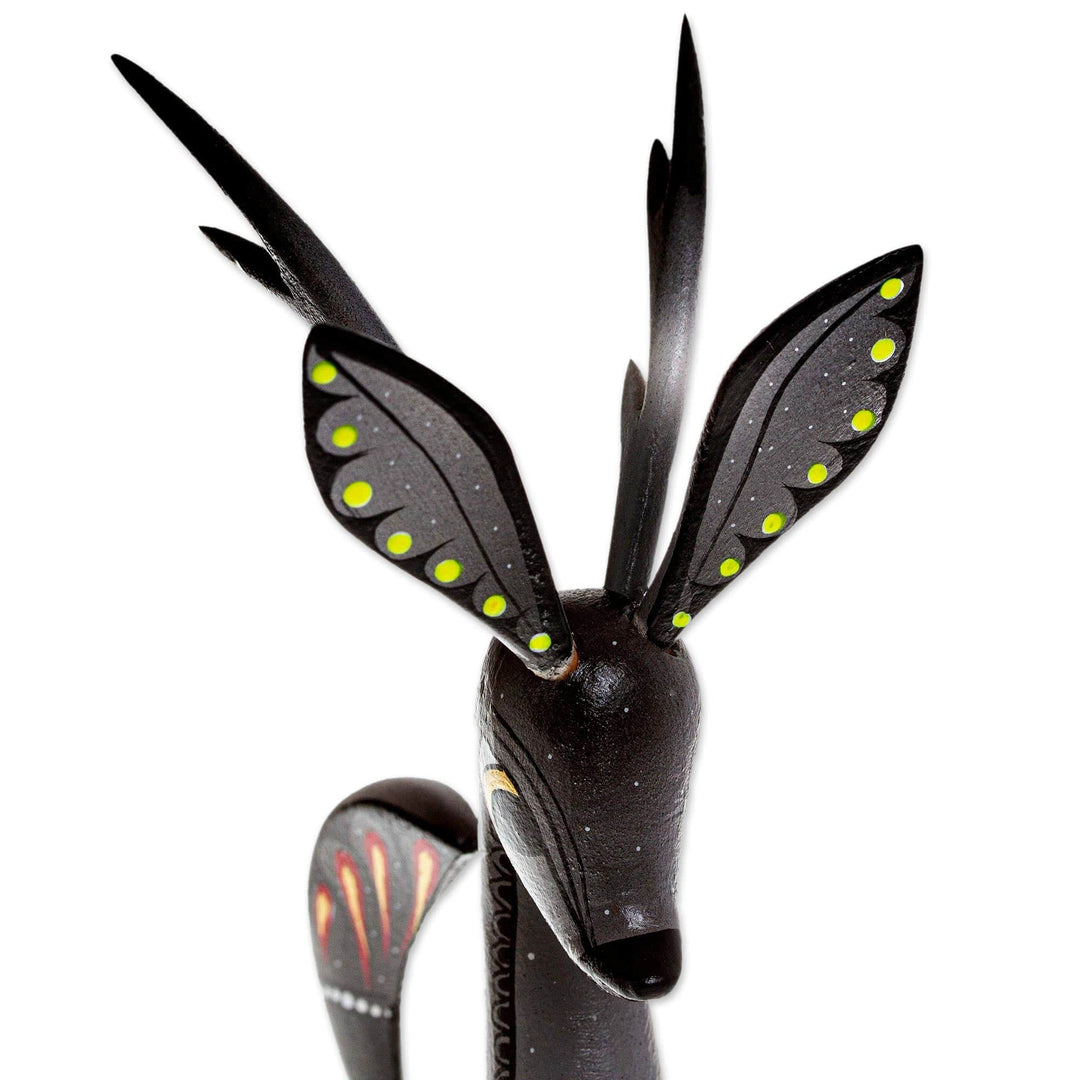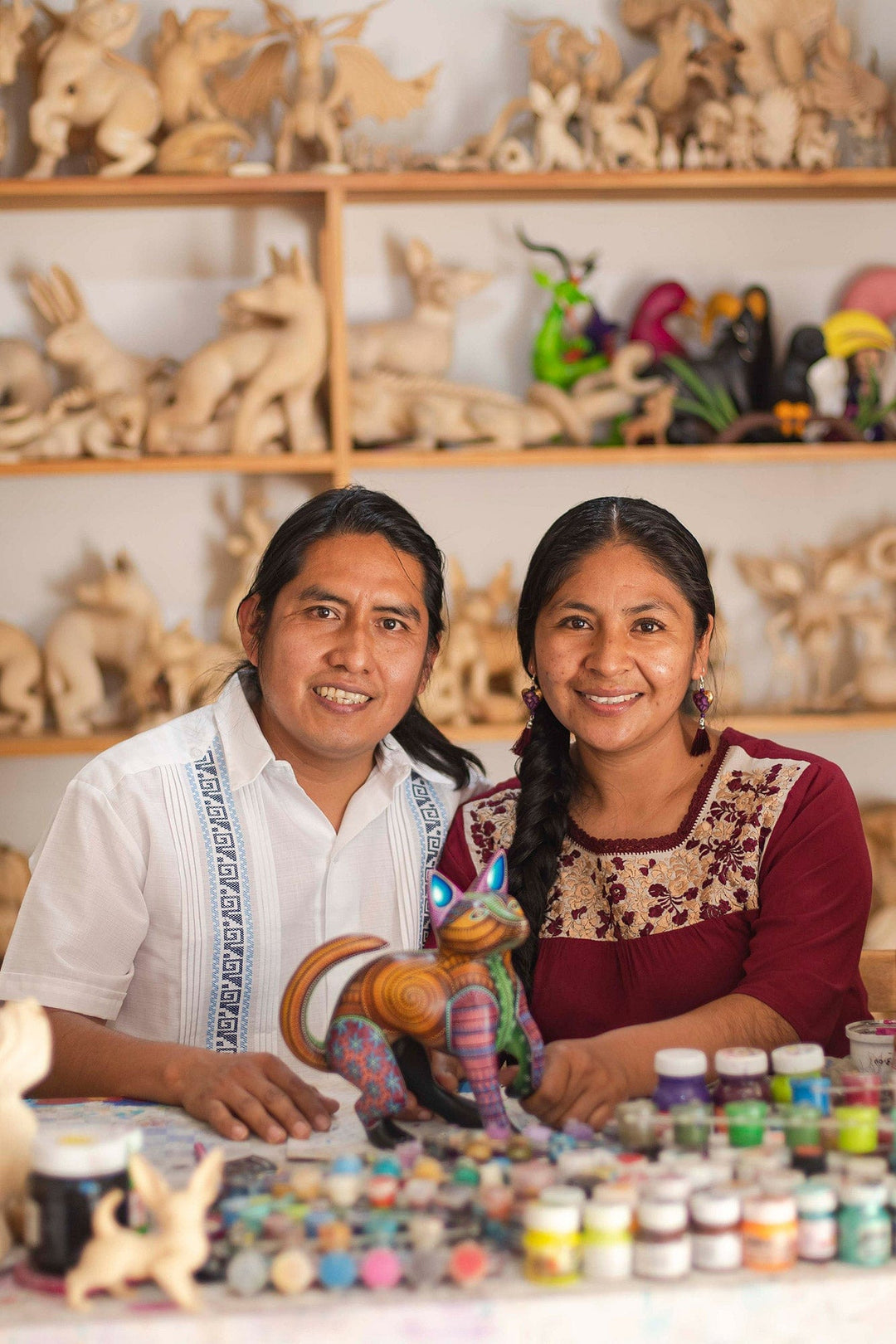

✓ Item added to cart
View Cart
Handcrafted Grey Deer Alebrije Sculpture - Dainty Deer in Grey
Learn more >
Sourced
Guarantee
Working in the traditional Oaxacan folk art form called alebrijes, Pablo and Lucy Mendez in Mexico create this marvelous sculpture. The delicate deer is carved by hand from copal wood and then painted in meticulous detail. Please note that small parts may be detached for secure shipping.
The folk art tradition of alebrijes dates back to the 1930s in Mexico City. A man named Pedro Linares was taken ill, and in his fevered dreams he saw a strange land populated with curious creatures--a donkey with wings, a rooster with bull's horns, and a lion with the head of a dog. The beasts all ran at him, shouting the nonsense word, 'alebrije! alebrije!'. Upon his recovery, Linares began recreating the fantastical creatures he had seen in his dream in papier mache. The art form gained popularity, and alebrijes are now made of wood as well as papier mache. The same style of painting can also be found on other (non-animal) items.
- Copal wood
- 0.64 oz
- 8 inches H x 4.7 inches W x 3.9 inches D
THE STORY BEHIND THE PRODUCT
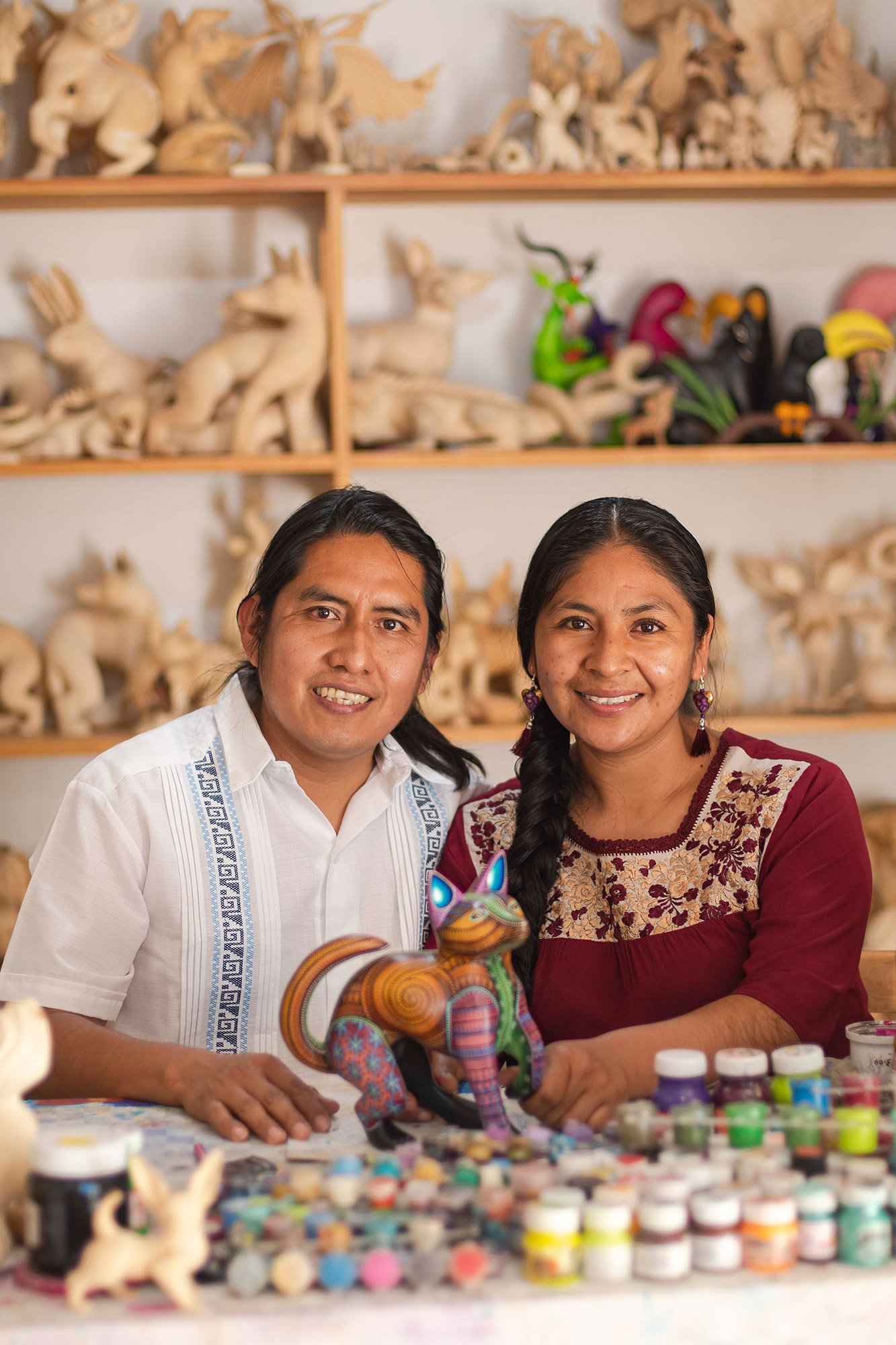
Artisan Organization: Pablo and Lucy Mendez
Country: Mexico
Latest Update
"We are a young married couple who inherited the knowledge of carving and painting copal wood alebrijes. We have gradually perfected our technique, which we have passed down to our children.
"We have been working for some years with this incredible technique that we learned. In our community in Oaxaca, copal carving is a tradition for families.
"We have several goals, one of which is to teach and share this beautiful art in our workshop. And it's how we learn more.
"You have allowed us to export our alebrijes to any part of the world, permitting us to concentrate on the quality and inspiration we give each piece. This has led us to hire family members for wood carving.
"We also have copal tree plantations that have allowed us to preserve this beautiful tree that has given us so much, and that was facing the possibility of extinction."
Original Artisan Story
"We are best friends as well as husband and wife. Together, we carve Oaxaca's traditional alebrijes, fanciful and fantastical creatures and images crafted from found wood and painted by hand in bright colors. We project creativity, innovation and quality through our work. We believe it's important to be kind, honest and responsible when working, and we seek to improve our efforts day by day.
"Crafts are a pillar for the economy of many families in our community. These workshops are made up of grandparents, parents and their children. In our case, this craft has been handed down from generation to generation. Our parents and uncles taught us and we are now teaching our children so that this art doesn't die out.
"Striking out on our own has been a bit difficult because we've just started from the ground up. Our desire to get ahead has motivated us to improve our alebrijes and we feel that competition is good.
"To learn this craft, you need to be very dedicated and patient. Our greatest challenge is innovating to create new designs. Our inspiration comes from everything that surrounds us, like nature and those moments in life that can express a feeling.
"We use natural branches of copal wood but sometimes work in willow, cedar and zompantle. I shape the creatures and images. We treat the wood and, when a piece contains imperfections, we make a sawdust paste to fill in the gaps. I do the carving, treat the wood and polish it. Lucy creates the designs and paints the motifs.
"What we enjoy the most is how real and mythical animal shapes can emerge from a simple branch. They can be so colorful and original that they appear to have had a life on another planet. It's wonderful to see so many people appreciating a finished piece and to observe joy and surprise on their faces. This is very satisfying for us.
"We'd like for our workshop to grow little by little and be able to offer jobs to other families in our community. We want our work to be seen in other countries so that everyone can be aware of the art in our town.""
